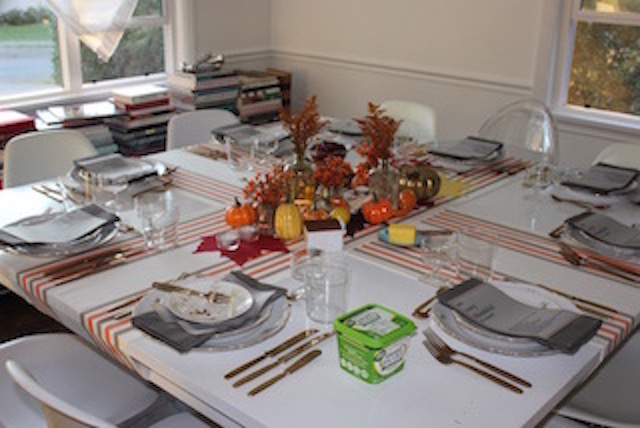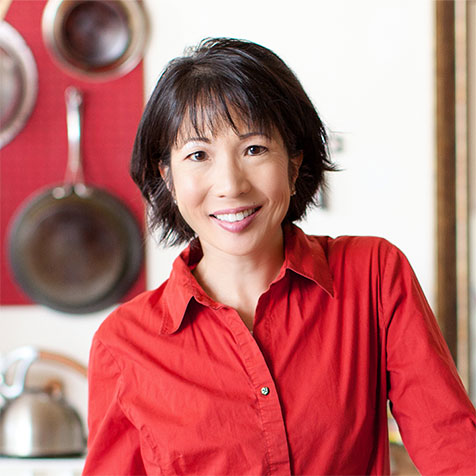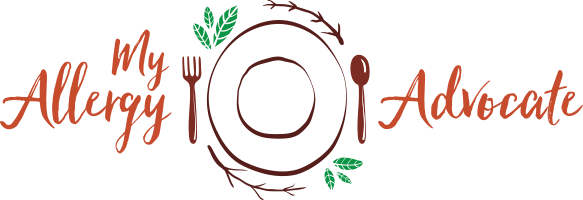
Before you can “eat all the things”, there are some things you might want to think about. Read this post to find out what you might want to consider. Photo by Imei Hsu Nov 2015.
Having just come from the doctor’s office, what I had already known but took over a year to confirm was formalized in an update on my medical chart. In the blink of an eye, in a single data field, my health status changed.
I left the office, relieved, yet overwhelmed and definitely unsatisfied. Now what? I didn’t have a clue.
Over a year’s worth of standard advice to follow the gluten free diet, my health had been trashed by a single accidental “gluten” incident in a restaurant: low blood pressure, loss of appetite, anemia, severe weight loss, nausea and vomiting, fatigue, weakness, poor sleep, and a horribly grumpy tummy.
On top of these symptoms, I experienced “brain fog”, that symptom I had only read about but never really understood. What was there to understand about something that makes you feel like you are unable to communicate clearly, put three sensible words together, remember simple processes or tasks, or even slur your speech?
I thought I was losing my mind.
It’s been over a year since that incident, and I’ve had time to think about what it is that I want to do with what I’ve experienced and learned from Celiac Disease and 300+ food allergies and intolerances. There is so much here, I have committed myself to getting it all down in a way I can share it for the biggest positive impact on those who are about to embark on the same journey.
Here’s seven things I wish I knew then.
What I Wish I Knew Then
There are a ton of things I wish I knew the minute I walked out of the doctor’s office that day. It’s no secret in the food allergy and autoimmune communities that there is plenty of misleading and uninformed content in the form of advice, all of it just a click away. Very little of it will help you heal, let alone give you some kind of idea of what you’re in for.
Here, I’m sharing seven of those “ton of things” that I wish I knew then, yet they are enough to get you thinking about the actions you’ll need to take and the mindset you’ll need to build if this is happening to you or to a loved one right now. Lucky you, because you get to know this NOW.
#1 It’s OK to be angry and scared
Hell, sometimes I’m still angry and scared! Being mad and being afraid is part of the grieving process that follows this kind of diagnosis. It’s pretty normal. Don’t let some stupid person come along and tell you that you sound paranoid because you are afraid. They aren’t facing what you’re facing.
You will run into people who don’t know what they are talking about. They do seem to read a lot of content off of Huffington Post on your disease or diagnosis. Instant Experts, right? They will say, “But it’s so easy to go gluten free now! Just buy Udi’s bread and gluten-free cake mix.”
If it were that simple, Celiac Disease treatment wouldn’t even be news. If avoiding an allergen like peanuts was so simple, you wouldn’t need to carry medication or know where the nearest hospital is located when you travel.
Instead, go ahead and grieve. Grab a good friend (or is you don’t have one, consider me your new virtual buddy!), and ask for permission to rant for awhile without needing to hear any condolences or apologies. Go into a quiet room (the closet works really well!) and scream your head off. You’ll feel so much better, and it will help you begin to move through all the stages of grief until you are ready to accept the lifestyle changes that it will take to help you recover, heal, and eventually strengthen yourself (or help your child, spouse, or friend).
#2. It is not as easy as eating food out of a box marked for your food restrictions
You will learn, as I have, that the food industry at large does not cater to your food restrictions. When they do, not all companies can be trusted. General Mills and the GF Cherrios snafu is a good example.
While one package may be clearly marked, “Made in a gluten free, nut free, dairy free, soy and corn free facility”, it’s still possible that their ingredients, such as ingredients marked, “natural and artificial flavoring” may contain hidden ingredients that can trigger a reaction. Almost every week, FARE (Food Allergy Research and Education) announces a recent food recall due to allergens found in food where those allergens were not listed. It happens.
For example, it took two different attempts to look up the source of “caramel color and flavors added” in my medication at a hospital, and one phone call to pharmaceutical company for clarification, to find out that the caramel flavor was sourced with corn. Corn gives me horrible cramping, diarrhea and some nausea, and rashes. Given that the medication was supposed to stop some of these symptoms, that wouldn’t have been a safe choice for me.
I agree that the food industry and the pharmaceutical industry ought to double down on ingredient lists and food labeling. However, these action points change very slowly. In the meantime, you gotta figure out what you can eat, right?
No, it’s not as easy as eating foods that are labeled for your food restrictions. It’s much more complicated. I have much more to say about this, but for now, processed foods are not your friend, nor is eating out, at least for awhile.
#3. Put on some cleaning gloves, roll up your sleeves, and make a list.
As soon as you can, roll up your sleeves, put on some cleaning gloves, and get to work. You will want to scrub your common cooking surfaces, clean and/or trash old pasta colanders, and remove plastic cross-contaminated food storage containers.
I recommend tossing your ‘glutened’ toaster. I tried cleaning mine, and every time I turned that thing upside down, more crumbs tumbled out from some hidden crevice. I donated it to a friend, and then took over my husband’s toaster oven (this is much easier to clean and keep free of cross contamination).
I came up with a system for cleaning dishes: my dishes get the blue sponge treatment before going though the dishwasher, and hubby’s dishes get the yellow sponge before going through the dishwasher. How do we tell the difference? The dishes go from the table to two different sides of the counter, unless all the food was naturally gluten and allergen free (which sometimes they are!). Ever since we instituted this system, I have not had a reaction from cross contamination in our kitchen.
Next, I made a list of replacement items that would be easy to differentiate from my husband’s storage containers, such as a different shape or a different lid color. I educated him on how to tell which jam jar was his (the one without “imei imei imei imei” written on them, and which items were not Imei-safe (the large container with the skull and crossbones drawn on it, with his “No Imei” handwriting on the outside). Sure, it makes you feel like a child sometimes.
Hey, whatever works. You think you’ll remember, you think your partner or child or roommate won’t double dip in your jam jar with his peanut butter’d knife. Do what works. Don’t make it complicated. Make it easy. Stop cross contamination from happening in your home, so you can figure out how to stop getting sick, and move onto healing.
#4. Leaky Gut is real.
“What are you doing to heal your gut?” asked an ND, who happened to be in the audience of a seminar for athletes on performance nutrition.
“I dunno,” I said. “I keep having symptoms.”
Despite following a very careful regimen of eating, something else was going on. In the face of doing everything “right”, I was still experiencing ongoing mild diarrhea, cramping, anemia, and slow but steady weight loss. It was clear my gut wasn’t healed yet, but healed from what? I did some research reading of my own, and it turns out that medical advice is divided about the existence of Leaky Gut Syndrome, aka intestinal permeability, caused by damaged seals in the small intestinal lining. I tend to lean towards the evidence being compelling enough to consider it real.
If the gut is “leaky”, no matter what you eat, you just keep reacting to food over and over again. The gut is irritated, inflamed, and acts like what I have referred to as a “grumpy tummy”. It’s not always copious amount of diarrhea. It can just be mild diarrhea and cramping that goes on more days than not, for weeks and months on end until you treat the leaky gut itself.
The search for a solution to Leaky Gut Syndrome led me to try a 30-day round of the AutoImmune Protocol (AIP). And when I was completely symptom-free on the AIP, I finally had Quiet Tummy, no rashes, and no more joint pain.
And it was oh so good.
So if you have an autoimmune condition, I propose that you not just treat the food allergy, intolerance, or autoimmune reaction with the abstinence of certain foods, but you actually heal the body with food as well, and end any Leaky Gut symptoms. You may have to hold off on certain foods for awhile, such as probiotics, until your gut is ready for it. Like me, you might be surprised that the Kombucha you just bought gave you horrible gas and diarrhea, but a year later, you actually feel the benefits of Kombucha, water kefir, and fermented vegetables like sauerkraut.
#5 .You might need additional testing in order to recover
One thing I’ve learned from working on the inside of the western medical model in a hospital setting is that the primary focus during crisis is to triage and stabilize a person so that the person is well enough to leave the hospital. A diagnostic code is attached to your visit, and that code is usually one critical factor that represents the reason for your visit and dictates the billable (i.e. covered) treatments that you are offered. Essentially, this is a description of how evidence-based medicine works.
When you leave the hospital, and when you leave your doctor’s office, you may have a number of concerns that need attention, but you may only receive the treatment for the primary concern. What happens if you have multiple concerns?
Well, these concerns don’t fit in your typical 15-minute follow-up appointment. The scheduler for your doctor, then, may give you a 30-minute follow-up appointment. In that longer appointment, you should ask about your need for additional testing.
This model of triage and stabilization in the hospital setting is what left me being discharged from a hospital around 3am with a blood pressure of 59/49. I was no longer vomiting, but hey, I was stable enough to shuffle my way to the car! [*insert tone of sarcasm*]
Candida overgrowths, Leaky Gut Syndrome, electrolyte imbalances, essential vitamin and mineral deficits, are just some of the testing you might need after the “Big Diagnosis” is made. I insisted on a second blood panel, and in my case, we confirmed that I was still anemic, had a low potassium level, and my blood pressure was also low. For now, I encourage you to shift your mindset from the Patient who simply follows doctor’s orders, to the Empowered Client, who asks questions and asks about additional options and tests.
#6. Once you are healed, you should get moving
While exercise is almost always advised to people after illness, I kept getting the stink eye from my health care team. They looked at me like I was crazy for wanting to jump back in the pool, get back on the road bike, and begin running again.
It is absolutely critical to understand that if you have just been diagnosed and you have not fully recovered from whatever just happened to you, you will need a rest period and time to recover. Period. Don’t argue. Let the body rest.
After you have rested and the your primary symptoms have quieted, you will need to find movement that helps your body heal. The movement and its intensity should be adjusted to the phase of healing: initial, middle, or advanced.
For example, I could not return to all-out running at my 5km pace after that big gluten incident, nor could I swim for endless laps without stopping. I ran slowly and walked; I swam slowly and used a pull buoy to reduce the intensity of exercise from my guts. I biked short distances and ate non-irritating, almost “baby food” consistency items as replacement foods. Sweet potatoes became my new BFF.
Exercise helps with encouraging healthy cell turnover, strengthening the immune system, and increasing cardio vascular health and muscle building. Even the yoga I did, gentle as it was, worked to help me strengthen my core and long muscles after two weeks of being primarily bedridden. Meditation helped me focus my breath, observe my thoughts, and still the panic caused by the aftermath of “brain fog”.
What I wish I knew then was that all of this movement was more than OK for me, after I had healed my gut. Instead, I and those around me were fearful, and it caused a lot of excess worry and stress that somehow I wasn’t being wise about this process. The truth: I was being conservative, and my actions were very wise. They were slowly progressive, and with strong oversight from my coach and other wise people, I felt completely safe to return to the activities I love.
#7 You don’t have to do this alone.
As I lay on the floor of my office, gasping for breath after being accidentally exposed to peanuts in my lunchtime meal at a nearby Vietnamese restaurant, the one thought I had was about dying alone. There are many things I can bear, I’ve learned — death of a loved one, the grief of divorce, and the loss of dreams — but it all seemed so meaningless if I died alone.
Besides the physical pain associated with an autoimmune condition, I think the second most painful part of a chronic and invisible illness is isolation. I simply don’t have the energy available to me to accept every social invitation I would like, and over time, I’ve watched people drift away. There is nothing malicious about this process, at least, not from my experience. I know it very difficult for others to accommodate my food restrictions, and I can’t necessarily cook safely in their kitchens. We can’t easily go out to eat either. And so, the invitations to do so have naturally dribbled off.
If you can’t go out into the world, then you can make the world come to you. I’ve started this website (with a full launch coming out in mid 2016) so that I could build a virtual community where we can socialize, visit each other’s homes through Skype, and share our stories and experiences.
I didn’t die that day in my office, obviously. And you don’t have to die socially, if you decide to reach out and join us, here and elsewhere on the Internets, to the millions of us who share your same concerns, challenges, and perhaps, new solutions.
What Next?
Coming soon: Are you trying to figure out what to do with your newly discovered food allergy, intolerance, or new diet because of an autoimmune condition, such as Celiac Disease, or other eating issues?
I’m looking for ten people who want to bypass the usual costly mistakes people make in the first two years after diagnosis, and who don’t want to waste time and money on things that don’t work. If that’s you, email me offline, and I’ll be contacting you soon.
2. Try my 7-day Cook At Home/Eat In Challenge, and find out if this is part of the missing piece that helps you feel better.
3. Join the community by subscribing to the blog, so you can follow the latest creations I am making to help you through the process from diagnosis to recovery, healing to strengthening.
* I did mention in earlier posts that when I’m talking about food allergies, I have a brain that takes on the mouth of a sailor. No offense meant. You can substitute, “Poo poo” if you feel better about it.




